The compact cone-shaped cypress Elwoody does not belong to the very whimsical representatives of the flora, but at home it sometimes withers, requiring a change in the conditions of care. This is a popular worldwide landscape and potted coniferous plant, which was originally grown only in gardens. Elwoody is unpretentious to natural conditions and is able to get comfortable in the open ground in the suburbs.
But the tree is comfortable at moderate temperatures, severe winters are dangerous for him, which means that during this period he needs protection from the cold. The crown of this cypress well tolerates decorative pruning. The transplant technology is simple, but caution is needed because of the delicate roots. An evergreen tree can be propagated in several ways and decorate almost any interior or landscape.
Content
Characteristics of cypress
According to the worldwide classification, this coniferous plant belongs to the Cypress family, the genus Cypress and the species Cypress Lavson. It also has several varieties: Snow White (with a white tint of foliage), Gold (with golden), Empire (with bluish) and others. The birthplace of the Elwoodi species is eastern Asia and the northern part of America.
Compared to other members of the family, this cypress grows slowly: the annual growth of its conical crown is 3-5 cm. In 10 years, it is able to reach only 1.5 m in height. Mature specimens rise by 2-3.5 m. Width varies between 60-120 cm.
The bark is reddish brown. Not very long, tightly closed branches are directed upwards, and the ends of the shoots are slightly inclined. Young trees needles needles. Then they acquire scales, become rhombic, with a blunt apex. The needles exude a strong and pleasant aroma. During flowering (in spring), bluish cones 1-1.2 cm in size appear, in each of which no more than 2 seeds ripen. The root system is superficial, a lot of thin roots.
Rules for the care of cypress Elwood at home
Basically, the care of this variety of cypress is to comply with the basic agrotechnical requirements (temperature, soil and air humidity, lighting, the presence of nutrients). Their violation leads to the appearance of diseases and pests. For preventive and decorative purposes, you can trim the crown.
Lighting and temperature
This coniferous tree is comfortable in partial shade. Placement near a window or on a glazed and insulated loggia of a northern direction is suitable. In a deep shadow with a lack of light, the color will become pale, the development of the plant will be disrupted. Burns will occur due to direct sunlight.
Humidity, watering and top dressing
Dry hot air during the summer and heating periods weakens the plant, making it lethargic and vulnerable to disease, which sometimes leads to death. In summer, try to create a temperature of about 22 ° C, in winter - 13 ° C.
At home, cypress need to provide increased humidity.This can be achieved by regular spraying (1 time in 3 days) in the early morning or evening with warm, settled water. In addition (especially on hot days), a container with moistened expanded clay will help to fully grow and develop, in which a pot with a plant should be placed.
Top dressing can be started in late spring, and completed in mid-autumn. Complex mineral fertilizers for indoor plants are suitable. Frequency - 1 time in 2 weeks. The recommended dose on the package should be halved.
Cropping and shaping the crown
With the onset of spring, it is necessary to carry out sanitary pruning by removing old and dry branches. Although the natural form of the bush is quite elegant, it can be slightly transformed. For example, using a secateurs, make the tree more elongated. In this case, it is impossible in the course of 1 procedure to get rid of more than 1/3 of the mass of all foliage and leave bare shoots. Pruning is permissible only a year after planting.
Diseases, pests and methods of dealing with them
| Problem | Manifestation | Measures |
|---|---|---|
| Root rot | Withering plants | Removing rotten roots, treatment with fungicides (Previkur) and biological products (Fitosporin), and then transplanting the plant into a new container with a fresh substrate. |
| The drying of branches and bark | Treatment with Fundazole or Bordeaux mixture, glossing over wounds and cracks with garden var | |
| Brown shute | Gray coating on dead needles | Treatment with fungicide (Fundazole). |
| Spider mite | Deformation of needles, suspension of plant growth, and later on - the presence of cobwebs. | The use of acaricides (Fitoverm, Talsar, Actellik). |
| Shield | Small brown growths on the shoots, easily removed by nails. Then - the stickiness of the needles. | Watering with Aktar solution and spraying with Aktellik. |
| Thuja Mining Moth | Shoots turn brownish and crumble. Gnawed holes of the pest are visible. | Hanging adhesive tapes during the summer, applying adhesive belts to the trunk. Insecticide treatment Bi-58 new, Karate, Confidor, Aktara, Dimilin |
Flower propagation and transplantation
You can increase the number of cypress instances by seed and vegetative (cuttings and using layering) methods. If necessary, it can be transplanted.
Sunflower seeds
The sequence of the seed propagation method is as follows:
- First, it is necessary to stratify the seeds so that they have better germination. To do this, fill the container with a light and nutritious substrate, place seeds in it and take it out into the street under the snow. You can harden seed material in the refrigerator for 2-2.5 months.
- In the spring, bring the container into a warm room (+ 18-22 ° C) with bright diffused light, where the seeds will germinate.
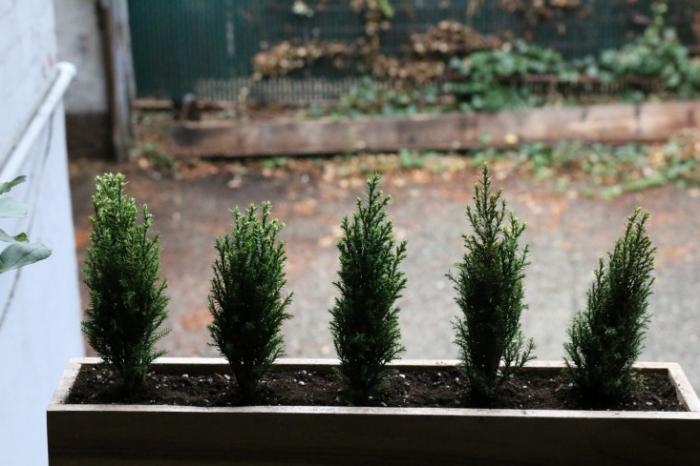
Seed propagation - Lightly strengthened seedlings are systematically watered and periodically taken out into the open air (without drafts) so that they harden.
- If the crops are dense, then they need to dive.
- Transplant well-grown plants into separate containers and create a small shadow for them.
Cuttings and bends
In early spring, you need to cut young apical cuttings 10-15 cm long at an angle from the lateral shoots of the plant and deepen the lower part, freed from needles, into a mixture of perlite and sand or another light substrate. Then ensure the content under a plastic film with a temperature of + 18-22 ° C and a humidity of at least 60% for 1.5-2 months. During this time, roots should form.
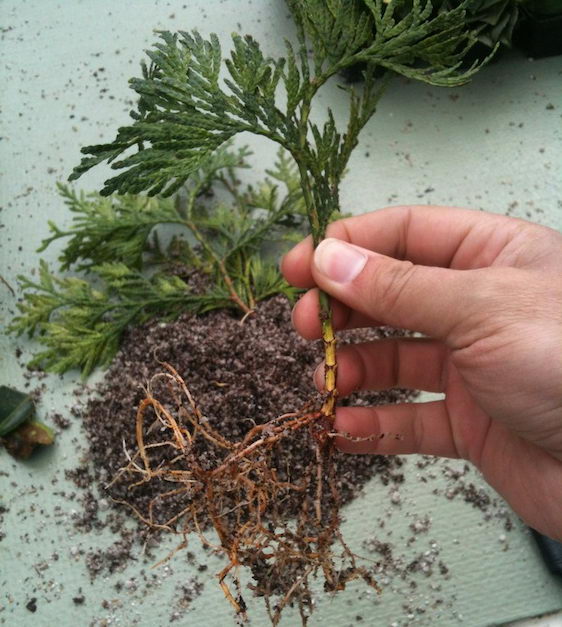
Offspring propagation is usually used in open ground. The lower shoot needs to be pinned to the ground and treated with a growth stimulator. After a year, layering can be cut and transplanted.
Transplant technology
A lot of delicate roots force delicately relate to the transplant and do not carry it out without special need. Without destroying the earthen lump, you need to carefully transfer the cypress from one container to another (there should already be drainage) and fill all the voids with a loose substrate from sheet and turf ground with sand.
The root neck cannot be deepened. Then you should remove the pot with a tree in the shade, apply a root stimulant (for example, Epin). Frequent spraying of the crown will be required, but watering should be reduced until the shoots are straightened.
Is it possible to plant an Elwoody cypress in the open ground in the suburbs?
This cypress belongs to the 7th frost resistance zone. The maximum range of winter temperatures for it is -12.2-17.8 ° C. Moscow Region is located in the 4th zone; in severe winters there is a risk of death of a coniferous tree planted in open ground. Often here they grow it in the fresh air in capacious tubs, and with the onset of a cold pore they bring it into the room. However, the experience of growing plants outdoors is also there.
Choosing a place and landing rules
It is necessary to choose a place protected from the winds for the seedling. For specimens with greenish and bluish needles, a shaded area is suitable, and for yellowish ones, an illuminated one. "Youth" should be protected from direct sunlight, which will damage delicate needles and lead to burns. Although cypresses prefer moist air and a location near a pond is encouraged, it is not recommended to plant them in swampy and low-lying places where groundwater lies, water and cold air are trapped.
The soil must be permeable. It is desirable that the soil is loamy or sandy loam, with an acidity of 4.5-5.5 pH. In cold climates, loose sandy soil is better suited to better protect the root system from frost.
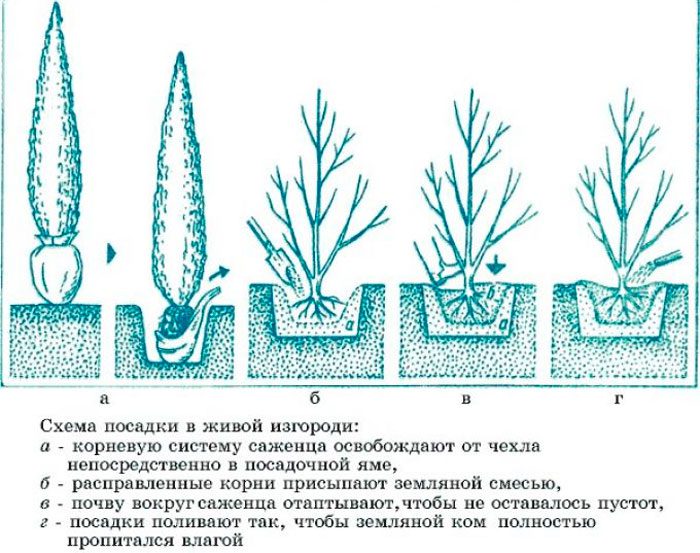
Landing rules are as follows:
- In the fall, prepare the site (dig, remove weeds), prepare the planting pit (depth - at least 90 cm, width - up to 60 cm) and lay a thick layer of drainage in it.
- Pour a mixture of peat, turf and leaf soil with the addition of fertilizers for conifers.
- In the spring, when the earth warms up and there is no threat of frost, place the seedling in a pit and sprinkle it with soil mixture. The root neck should not be sunk in the ground.
- Water and mulch the trunk circle abundantly with peat or dry sawdust.
Personal Care
Until the bush takes root, it needs to be sprayed regularly. Watering should be plentiful (the top layer should not dry out), on average - 10 liters per week. Water stagnation must not be allowed. After each watering, the trunk circle should be loosened, if necessary, updating the mulch layer.
Reviews for home cypress care
Reviews from indoor plant lovers help to correct or not to repeat common mistakes. Most often, they experience difficulties due to dry air in the room, temperature violations (especially in winter):
Svetlana, flower grower: “Such a cypress has been living in my kitchen for 9 months. Near the window in winter it is cool, light (without bright rays), sometimes fresh air enters. Watering gently, spraying. I bought it before the New Year, in February I successfully transplanted it. He grew up well - by 7-8 cm. "
Olesya, amateur flower grower: “I put the presented cypress on the windowsill and watered like other plants, but it began to dry out.It turned out that I did not observe normal temperature and lighting. Transplanted it into a new pot, provided good humidity with the help of the bag. He has turned greener. ”
Vyacheslav, pensioner: “I provide all conditions of detention. It grows slowly, but does not fade. I'm worried about the transplant. I know that the plant does not always tolerate this procedure. ”
Natalia, experimental florist: “In apartments with good central heating, it is very difficult to ensure a normal wintering. My “ward” lost its decorative effect by spring. ”
Angelina, the owner of 3 cypress trees: “Actually, taking care of my pets is easy. The main thing is to water in a timely manner, immersing somewhere for 10 minutes in water and keep on a cold windowsill. ”
Common Growing Questions
This variety of cypress attracted many flower growers due to its compactness, aesthetics, usefulness, as well as cultivation features. Difficulties are not excluded, but they can be avoided if the plant is properly and regularly taken care of.

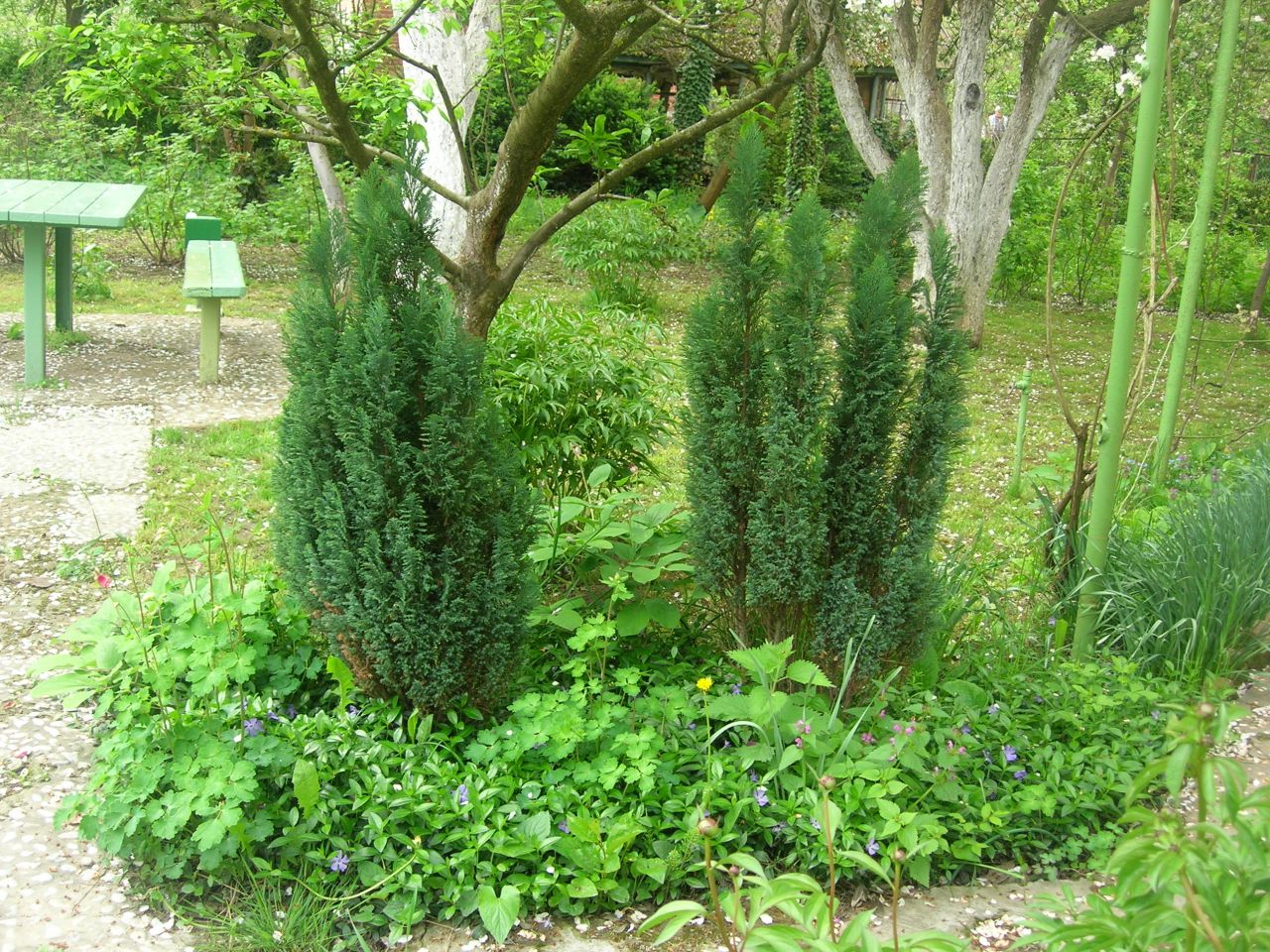
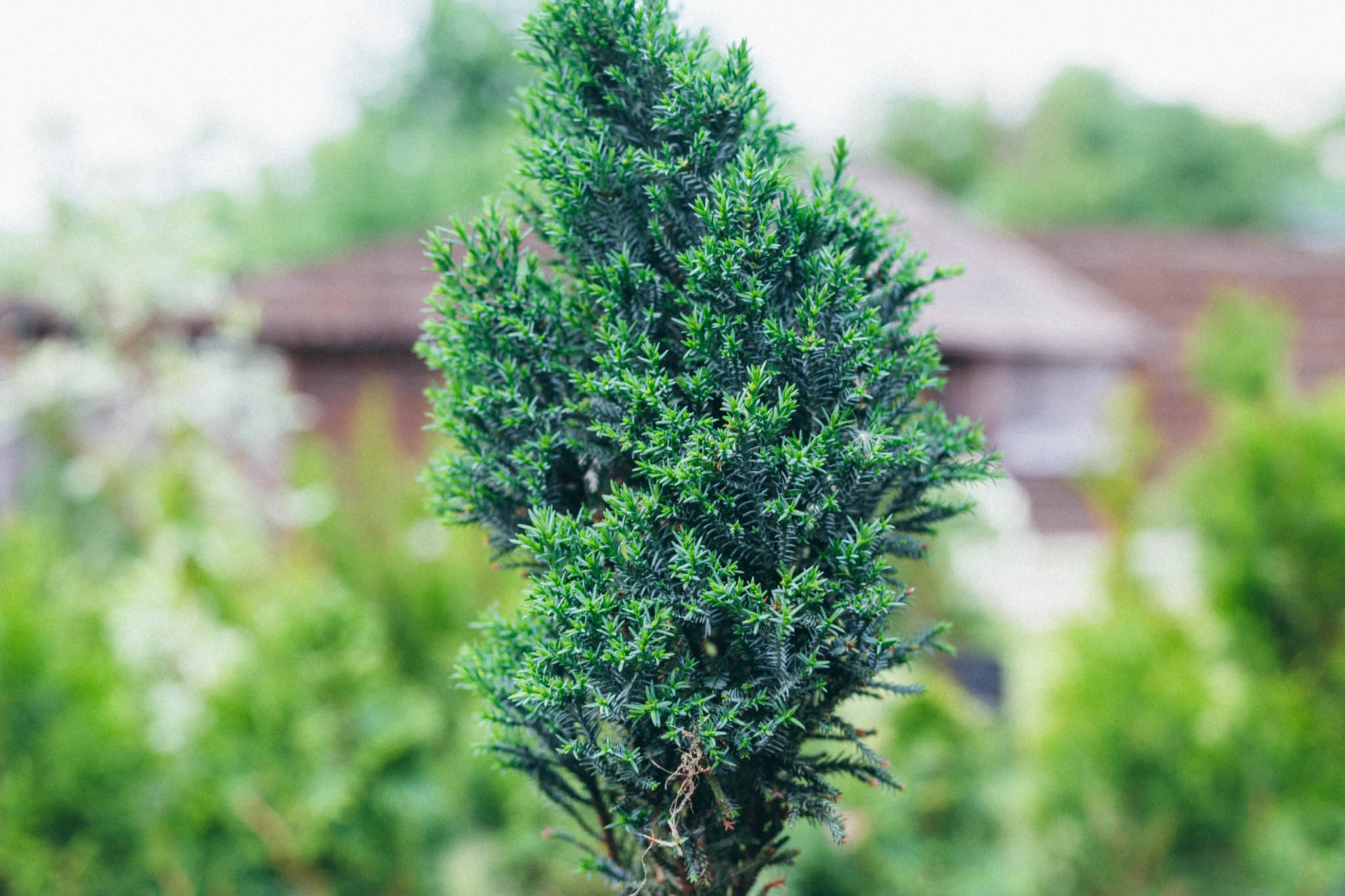
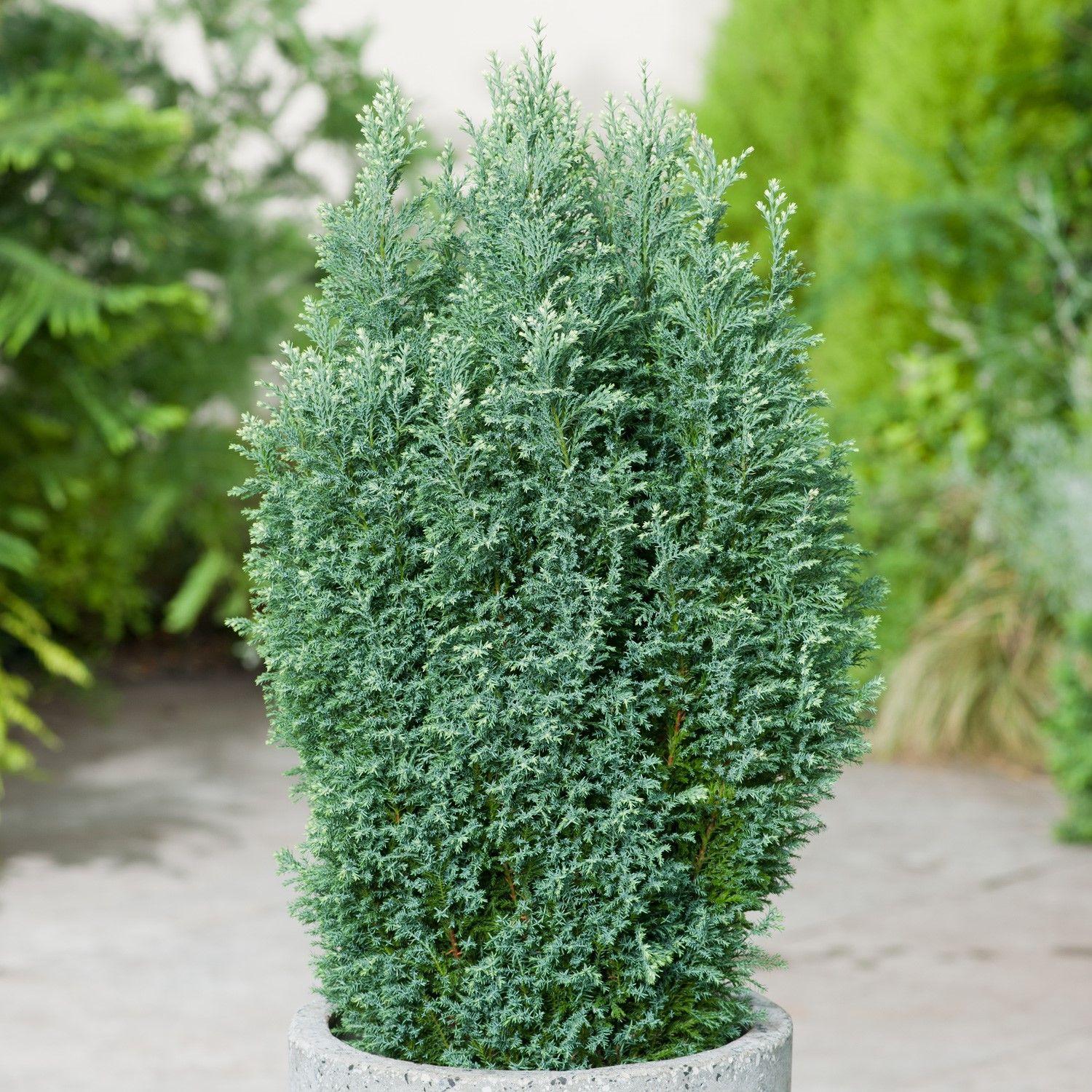



 Sow in the ground, without seedlings: 10 beautiful and unpretentious flowers
Sow in the ground, without seedlings: 10 beautiful and unpretentious flowers Platicodon planting and outdoor care
Platicodon planting and outdoor care Hosta - planting and care in the open ground in the Urals
Hosta - planting and care in the open ground in the Urals Oleander - care and growing at home
Oleander - care and growing at home